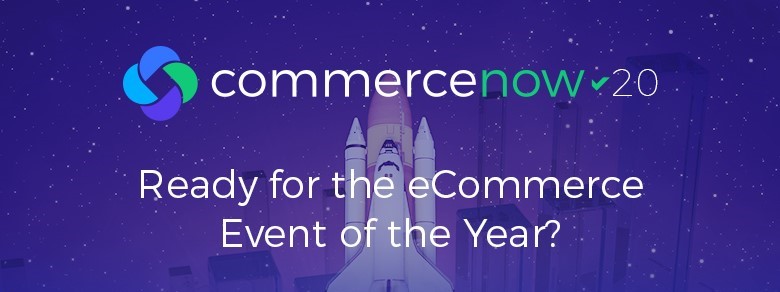Our fourth CommerceNOW 2020 online event was held this past June, and brought together some of the greatest minds in eCommerce, digital marketing, conversion rate optimization, customer retention, global payments, and more, to share their knowledge and acumen.
In this second of a series of blog posts, we’ll share the key takeaways from four of the CommerceNOW ’20 presentations. You may also register to watch all of the recorded webcasts here.
Four of our industry experts addressed the topic of successful conversion, and ways to ramp it up through the entire customer journey. Their key takeaways:
- Conversion optimization is as much about using emotion to affect your customer’s decision as it is about changing elements on your website.
- Aha moments are only path makers—they provide a framework for what elements to optimize and what ideas to apply to create a successful customer journey.
- The user is the hero you should focus on and address, not the high-level decision makers in the company who pay for the product. Make it easy for that user to discover how your product can solve their problem.
- Focus on creating effective one-to-one conversations with your user, as they will be the most influential lever to generate conversion and revenue.
In her presentation “The Power of Emotion: How to Create Funnels People Love to Convert to,” Talia Wolf, founder and chief optimizer of GetUplift, addressed the importance of understanding how emotion motivates people to buy from you.
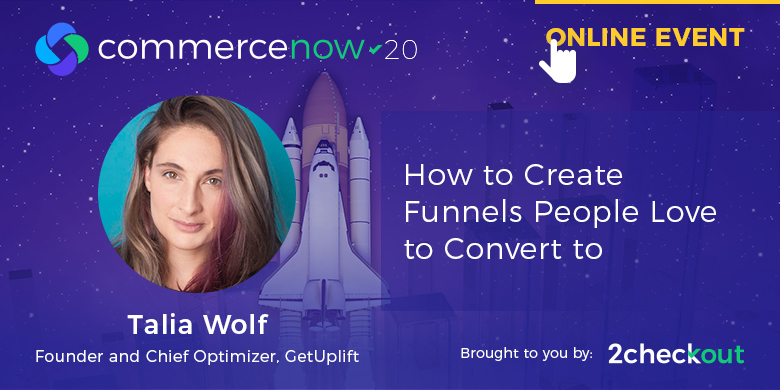
She describes a three-step process:
- Conduct meaningful customer research (interviews, competitor analysis, social listening, review mining) to find out what products your customers need. Look for repeating themes and then address them with your content and approach. Keep in mind these four core questions:
- What pain does my customer feel before finding a solution?
- What are the emotional triggers that drive their decision making?
- What are their hesitations and concerns?
- How do they want to feel after they find a solution?
- Add emotion to copy. Describe your customers’ struggles and paint a picture of how your product will help them with those problems. Keep in mind these copy essentials:
- Focus on value, not benefits
- Tell your customer’s story, not your own
- Lead with empathy; relate to your audience
- Build a relationship with the customer; make it “you and me” not “us, our”
- Add emotion to design. Use your copy and visuals to support your emotional message. Some key ways to do this successfully, Talia shared:
- Go back to design basics, reducing visual noise as much as possible. Make the copy easy to read. Make your CTA button easy to find.
- Use visuals that show how the product will benefit the customer; illustrate its value by featuring real people using it. If you’re selling a security system, don’t show a picture of the camera equipment—show them a father playing ball with his child in the yard, where the cameras would be installed.
In conclusion, Talia emphasized that “we all know what we are selling, and we know how to do it, but almost no one understands the WHY. Go deeper and learn your customers’ emotional triggers, and you’ll increase your conversions times 10.”
Yohann Kunders, content editor for UserOnboard, presented “The Aha Gamble: Proxies, Pseudo-Value, and Abandoned Users in User Onboarding.” The Aha moment, Yohann explains, is when the user has that sudden realization of the value of your product. Naturally, if they experience that spectacular moment, they are likely to start paying you.
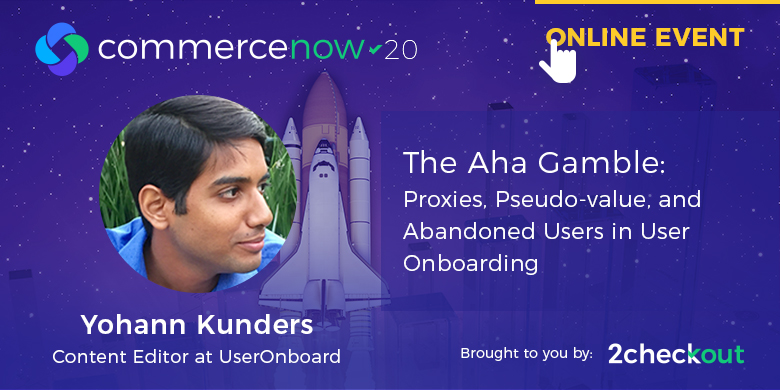
Yohann addressed this concept in three parts:
- Why are Aha moments so compelling? “Aha moments are path makers,” Yohann pointed out. “They give a company a framework for what elements to optimize and which ideas to apply.” This pathway leads to important questions about how to get to the Aha moment.
- Why are Aha moments a gamble? Yohann emphasized that it isn’t the Aha moment that has the value, it’s what it leads to that is of value. The user needs to have certain skills and abilities, after they have the Aha moment, to attain the ultimate value. “The Aha moment is usually at the beginning of the journey, and if the skills and abilities aren’t there, the value can’t be reached,” leading to churn.
- What should we be focusing on instead? “What does business value mean to you? This is your North Star for what your onboarding should look like,” Yohann said. “Look at your user activity, figure out why it’s happening, and make more of it happen!” Find answers to the questions “What do I change?” “How do I implement changes?” and “How do I know my changes are working?”
In conclusion, Yohann shared an article on finding your onboarding North Star, as well as links to other helpful articles on this topic.
In his presentation “How to Make a SaaS Website That Works,” Eduardo Esparza, founder and CEO of Market 8, says “Your website is the means for your user to sign up, so treat your site like a first-class citizen.”
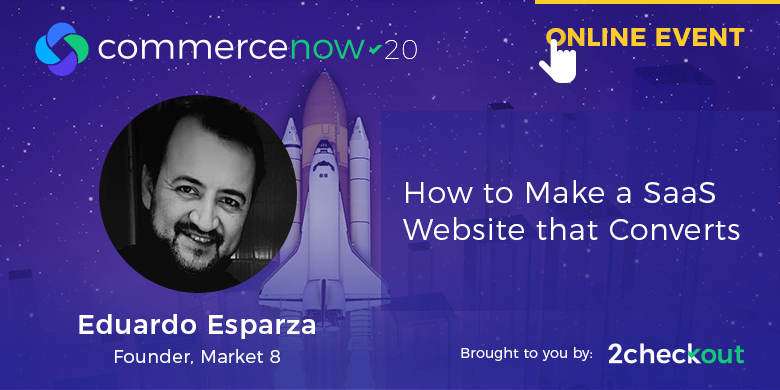
Eduardo walked us through the journey of communicating the value of your software, with a combination of high, mid, and low-touch strategies for different markets—SMB’s, mid-market, and enterprise. He emphasized that the goals of your website depend on the relationship among all these factors and audiences.
Here are four of his guidelines for making a SaaS website perform better:
- Find your value proposition. What is your product? What does it do? What can you do with it? A “killer value proposition,” Eduardo says, “is targeted, specific, and unique,” and resonates with your customer. If you’re not sure, ask your customers, he adds. Take a deep look with a wide range of questions, via surveys, phone calls, polls, as a part of their onboarding, etc.
- The user is your hero—help him do his job. Speak to the people in the business who are actually using your product on a day-to-day basis, not the high-level decision makers. Let your site be like a trusted friend who will help solve your problem. Offer truly helpful content that links the problem to the solution.
- Get their hands on the product. Get them to try it, whether via demo, trial, or freemium. Try different conversion point formulas to see what works (Eduardo provides several). Kill the friction points to get their hands on the product—make the design simple with a minimal menu and lots of white space, short, concise copy, with the main goal to let your user discover how your product solves their problem. And always have a “next step” for the user.
- Embrace testing and experimentation. Eduardo shares some of the things you should be monitoring and testing, using ABT. Continue to monitor and update your website performance and implement modifications based on the results of your testing.
“The goal of your site is to help you sell more software,” Eduardo points out. “Without a good website, you don’t have a SaaS company. Treat it like a first-class citizen.”
Lucas Walker, who works in marketing and partnerships for Gorgias, talked about the importance of conversation to successful conversion, in his presentation, “Conversational Commerce is all About Increasing Conversions through 1:1 Real-Time Interactions.”
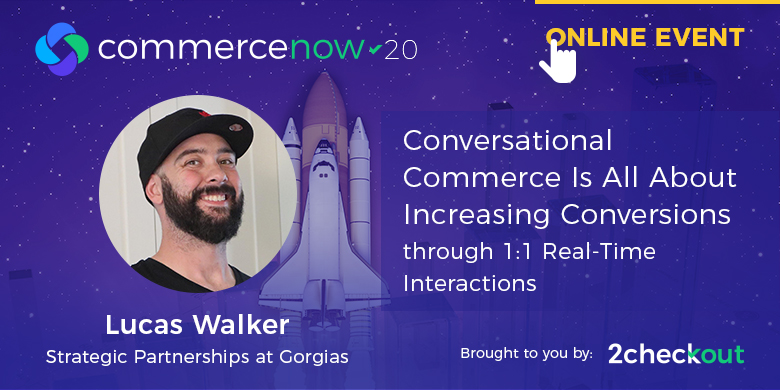
COVID-19 has caused eCommerce business to soar over the past few months, Lucas explained, but of course with any increase in sales you also have an increased need for support-related conversations with customers. When these conversations are effective, your revenue will also soar.
Lucas explains that with the huge rise in mobile messaging apps, a key to their effectiveness is building trust with your customers. You do that by responding to them promptly (research has shown a 28% conversion rate for pre-sale chats or SMS that replied in less than 10 minutes).
Lucas recommends an “omni channel approach” for these customer conversations, outlining a few of the ways a business can effectively conduct and leverage them for successful conversions:
- Post-purchase email upsells, using an “update” email as an opportunity to promote other products
- Email automation, which takes the pressure off the customer service agent
- Messenger has been used widely during COVID
- Facebook and Instagram ads, using responses from users as an opportunity to address problems or questions
- SMS—should be personalized, catch their attention with imagery or emojis, ask a question. Speak in first person, no blasts, just one-to-one.
- Homepage Live Chat—can be helpful on product page and in the cart, and may be used at times of day when there is high traffic. In-cart message could be “Did you find everything you were looking for?” to possibly drive additional purchases before payment.
To learn more about the trends, insights, and tips and tricks that some of the sharpest minds in eCommerce, digital marketing, CRO, and customer experience shared at CommerceNOW 2020, you can sign up here to access all the sessions.


